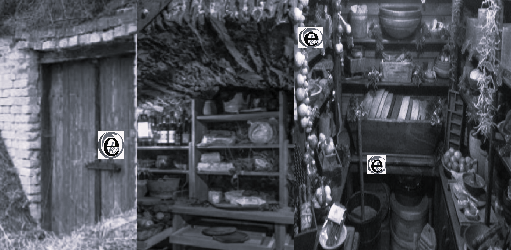BASIC TIPS FOR SUCCESSFUL ROOT CELLARING

BASIC TIPS FOR SUCCESSFUL ROOT CELLARING
Root cellaring is not quite as simple as having a cool, dark place with good humidity and air circulation in which you store a bunch of fruits and vegetables.
It isn’t complicated, but you will need to include the following practices in your root cellar maintenance.
#01
- Harvest vegetables, especially root vegetables, as late in the season as possible before cellaring them.
- Be very careful when handling food that you intend to
- Even minor scratches and bruises can lead to speedy
- Do not wash root vegetables before putting them into cold storage; simply brush the dirt off of them.
- Some foods such as potatoes, and winter squash including pumpkins, onions, shallots, and garlic need a drying-out or “curing” period before they are stored in a root cellar.
- To do this, store them away from direct light at warmish room temperatures for a few days or as much as 2 weeks before transferring them to cold storage.
#02
- Carefully examine each fruit or vegetable before putting it into cold
- Those with bruises, skin breaks, or other blemishes could cause other produce that they are stored with to rot.
- Ever heard the adage about “one rotten nut spoiling the whole barrel”?
- It’s true!
- Take a look at your cellared fruits and vegetables regularly and remove individual items that are showing any brown spots, mold, or other signs of spoilage.
- Don’t throw them out, though.
- There’s probably plenty of unspoiled food there to salvage for immediate eating, dehydrating, chutney making, and the like.
#03
- Vegetables generate heat, which can cause spoilage when they are piled deep.
- Try to store the food in a single or few layers, and rotate them every couple of weeks.
- Pears and other fruits should be stored separately from vegetables.
- They should also be loosely, and individually wrapped in paper.
- The reason for both of these pieces of advice is to prevent the ethylene gas emitted by the fruits from speedily ripening adjacent foods or causing them to rot.
#04
- Store brassicas including turnips and cabbage separately from other foods and don’t store them too close to your home.
- This is not because of spoilage factors but rather because this group of vegetables has sulfur compounds that can create an unpleasant rotten egg smell
- They will still taste fine when cooked, but you didn’t want your living room to smell?
#05
- Your root cellar is not a good place to store your canned goods.
- Home-canned jars need a cool but dry
- The relatively high humidity of a root cellar can potentially unseal canning lids.
- However, the cool, dry environment that home-canned goods need is an ideal environment for storing onions, shallots, and garlic.
- Unlike most fruits and vegetables, those members of the Allium genus should not be stored in the high humidity of a root
- A cool, dark, dry pantry is ideal for storing both your sealed jars of food and those bulb vegetables.
- If you don’t have such a place in your home, prioritize the dark and dry over cool (a hallway closet will work).
- If you need to store onions, shallots, or garlic in your root cellar, remember that the driest air will be farthest away from the door or opening and at the higher





